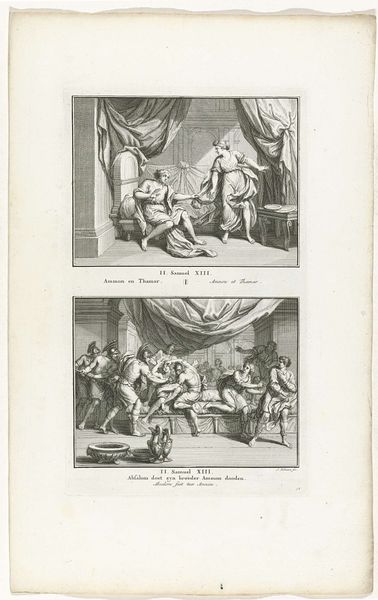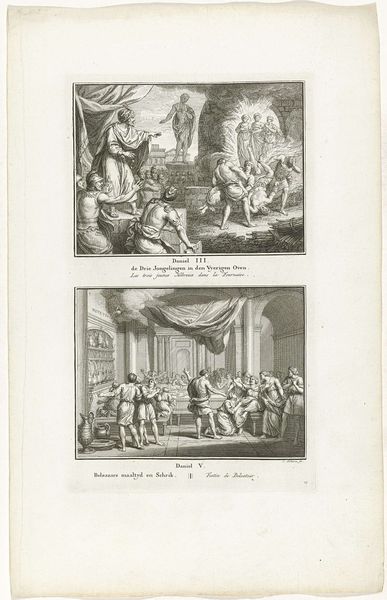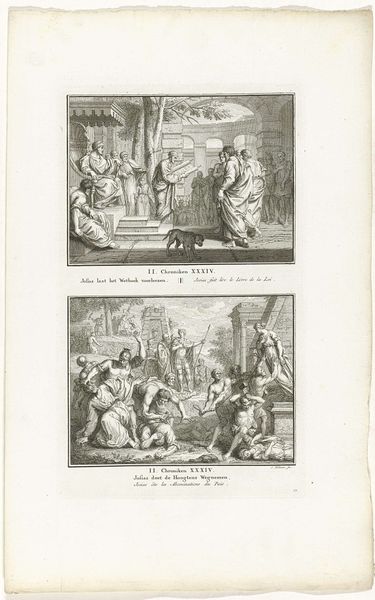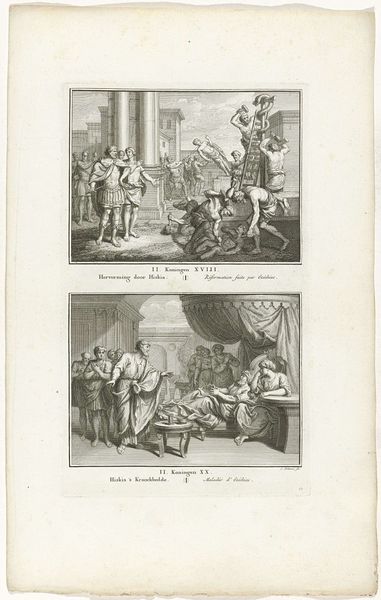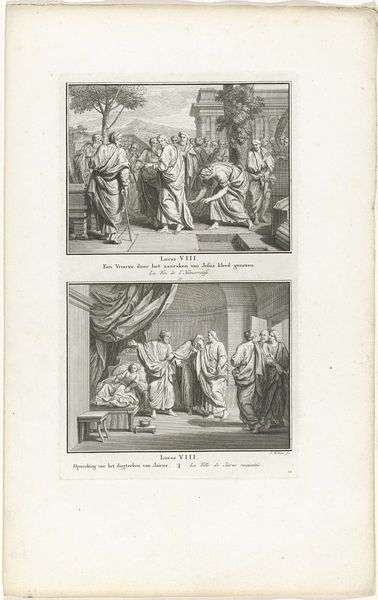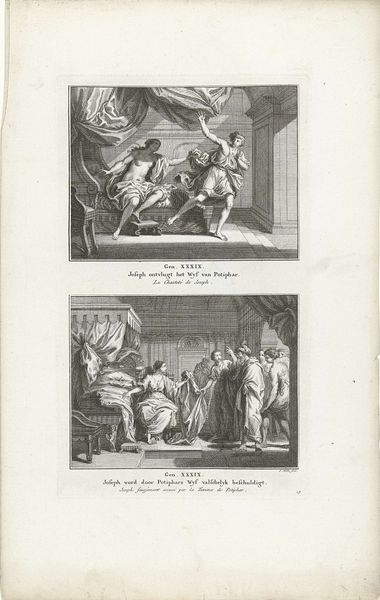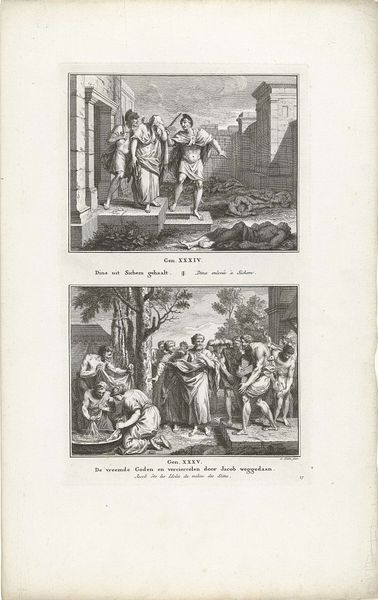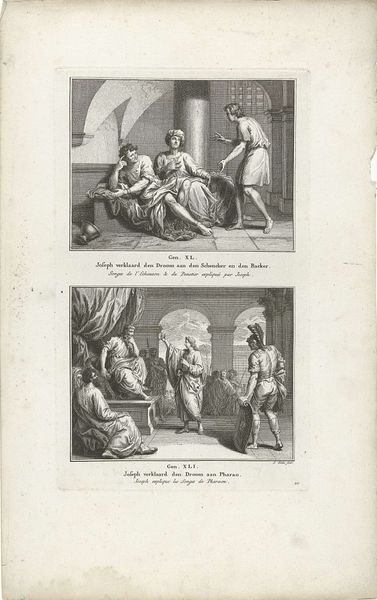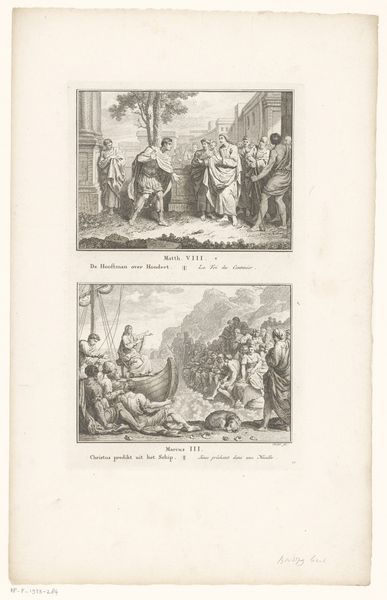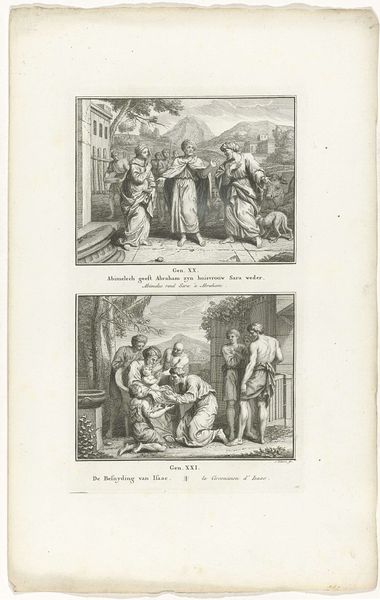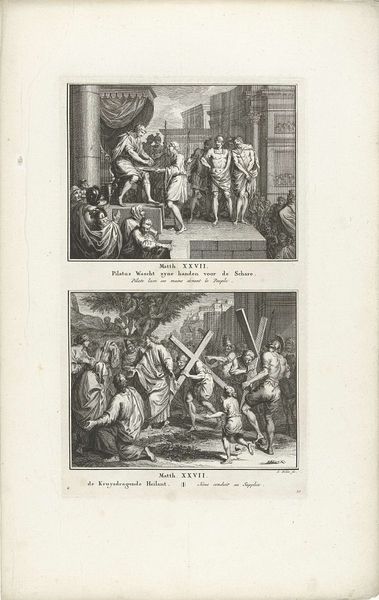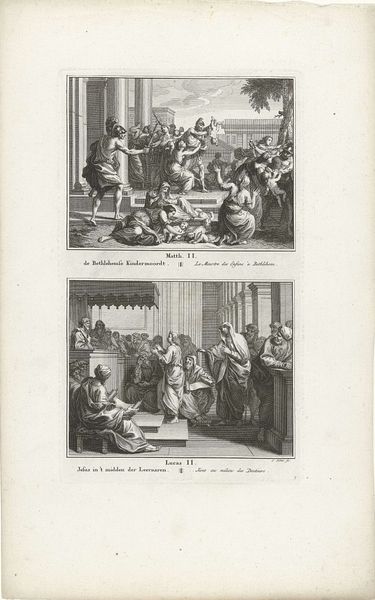
Geboorte van Johannes de Doper en Maria en Jozef melden zich aan bij de volkstelling te Bethlehem 1791
0:00
0:00
jacobfolkema
Rijksmuseum
Dimensions: height 318 mm, width 190 mm
Copyright: Rijks Museum: Open Domain
Curator: This engraving, completed in 1791 by Jacob Folkema, showcases two biblical scenes side-by-side. The Rijksmuseum holds this work titled "Geboorte van Johannes de Doper en Maria en Jozef melden zich aan bij de volkstelling te Bethlehem", which translates to "The Birth of John the Baptist and Mary and Joseph registering for the census in Bethlehem." It's fascinating how Folkema combined these moments. Editor: It strikes me as oddly… clinical? The linear quality of the engraving, combined with the symmetrical arrangements in each panel, creates a sense of detached observation rather than emotional investment in these pivotal religious stories. Curator: Precisely. Note the baroque influence, particularly in the dramatic figuration and implied dynamism. But Folkema refines that into a more restrained narrative style suitable for print. Both images present stories of transition, of official recognition, from John's recognized birthright to the fulfillment of prophecy. Look how, across each image, the families present themselves before governing figures. Editor: It’s also interesting to consider the division of space within the single image. A line cleaves the narratives in two and the scenes don't interact with each other visually. The subjects share no visual cues between them. What’s emphasized? Curator: I'd suggest the symbolic parallel of acknowledging divine providence during times of human governance. Both scenes feature elements of faith, yet are grounded in mundane civic duties. The announcement of John's birth in the top register, and the humble submission of Mary and Joseph below. Each narrative subtly reinforces the idea that the divine exists within the world, and the spiritual journeys play out within the context of society. Editor: Perhaps the detachment stems from that. In these linked works the divine is a bureaucrat: cold, impassive, registered in careful accounting, but there nonetheless. Thank you for pointing out those important social details! Curator: A pleasure. I hope that insight encourages you to revisit the history carried in these lines!
Comments
No comments
Be the first to comment and join the conversation on the ultimate creative platform.
